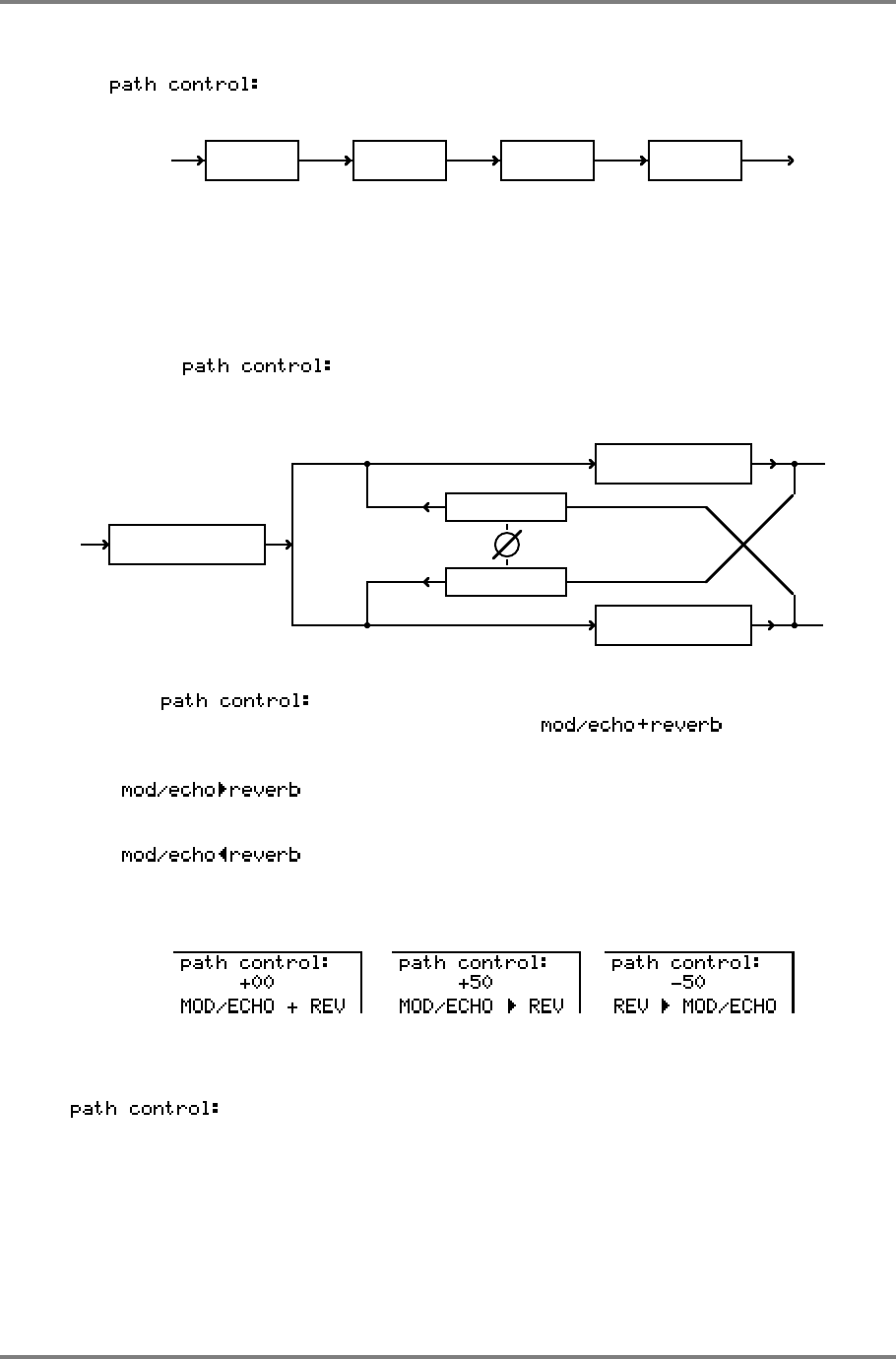
EFFECTS EDIT
Page 204 CD3000XL OperatorÕs Manual
EFFECTS DIRECTION
The parameter allows you to set the flow or direction of the effects. Most multi-
effects processors follow a ‘traditional’ path for the effects - i.e.:
DIST/EQ MOD FX ECHO REVERB
However, there are times when you want to have the modulation and echo effects in parallel
with each other or to be able chorus, flange or phase the reverb to add a shimmer or a ‘swoosh’
to the reverb decay. When using separate outboard effects processors, this is simply a matter
of patching the effects in the order you want. Many multi-effects processors don’t allow this,
however, and you are limited to just one path as depicted above.
The CD3000XL’s effects processor allows you to set the path of the effects with one simple
control, the . You may have mod/echo followed by reverb; you may have
reverb followed by mod/echo or you may have mod/echo and reverb in parallel.
PATH CONTROL
MOD/ECHO
REVERB
PATH
PATH
DIST/EQ
L/R outs
L/R outs
When the is set to 00, the mod/echo section and the reverb section feed the
main left/right outputs in parallel. The display will show .
When set to +50, the output of the mod/echo section is fed into the reverb. The display will
show .
When set to -50, the output of the reverb is fed into the mod/echo section. The display will
show .
You will note that as you change the path control parameter, the direction is shown beneath it:
When set to values in between, this means that part of the signal is going to the reverb or the
mod/echo section whilst also feeding the L/R outputs directly. For example, setting the
to +25 indicates that some of the mod/echo section is being fed to the reverb
whilst also going direct to the L/R outputs. Similarly, a setting of -25 would send some reverb to
the mod/echo section whilst some reverb is going direct to the main outputs.
